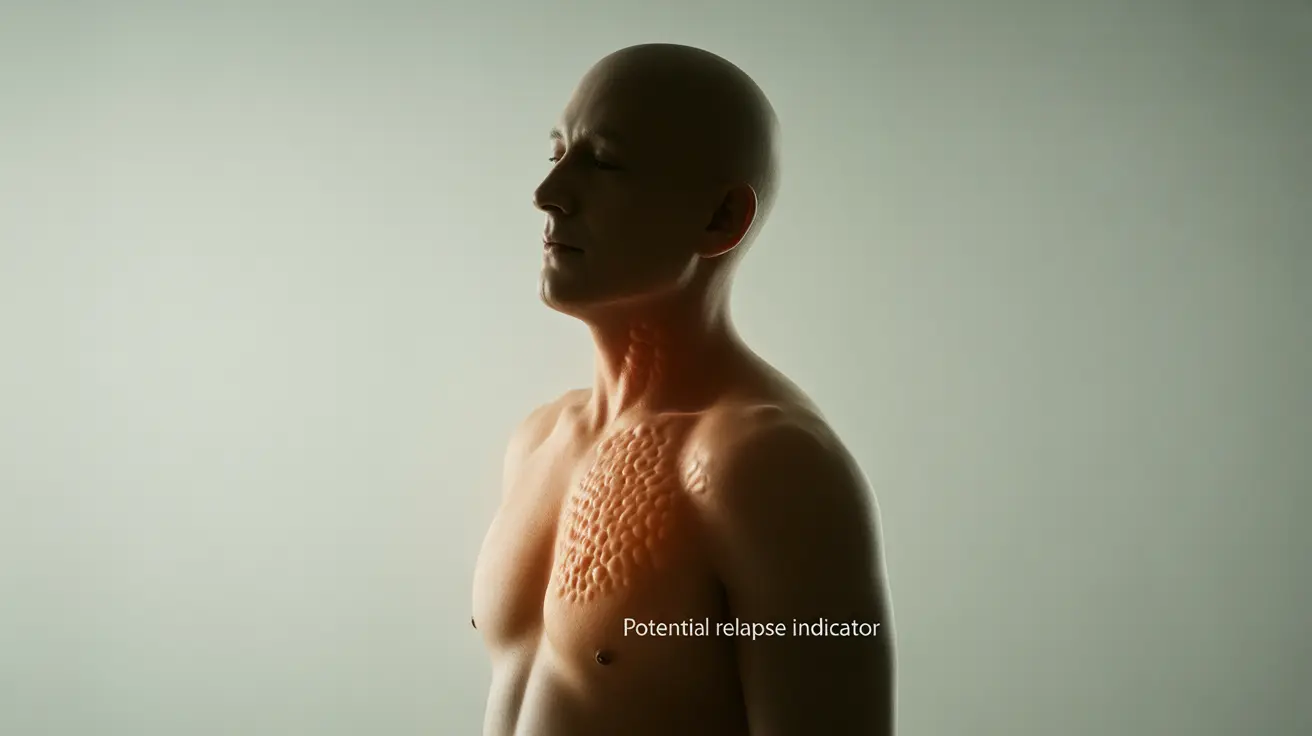Being diagnosed with Hodgkin's lymphoma can be challenging, and understanding the possibility of relapse is an important part of the journey. While many patients achieve successful remission, knowing the signs of potential relapse and available treatment options is crucial for both patients and their caregivers.
This comprehensive guide explores the key aspects of Hodgkin's lymphoma relapse, including common symptoms, treatment approaches, and what distinguishes relapse from refractory disease. Understanding these elements can help patients maintain vigilance and seek timely medical attention when needed.
Common Symptoms of Hodgkin's Lymphoma Relapse
Recognizing the symptoms of relapse early can lead to better outcomes. The most common signs include:
- Enlarged lymph nodes, particularly in the neck, armpit, or groin
- Persistent fatigue that doesn't improve with rest
- Unexplained fever or night sweats
- Unintentional weight loss
- Itching skin without an apparent cause
- Persistent cough or breathing difficulties
It's important to note that these symptoms can also be caused by other conditions, including infections or stress. However, anyone with a history of Hodgkin's lymphoma should discuss new or recurring symptoms with their healthcare provider promptly.
Treatment Approaches for Relapsed Disease
When Hodgkin's lymphoma returns, healthcare providers typically develop a personalized treatment plan based on several factors, including:
Standard Treatment Options
Treatment for relapsed Hodgkin's lymphoma may include:
- High-dose chemotherapy
- Stem cell transplantation (autologous or allogeneic)
- Targeted therapy drugs
- Immunotherapy treatments
- Radiation therapy in specific cases
Novel Therapies and Clinical Trials
Many patients with relapsed disease may be candidates for innovative treatments through clinical trials. These might include new immunotherapy approaches, targeted medications, or combination therapies that show promising results in research settings.
Understanding Relapse Risk and Prevention
While complete cure rates for Hodgkin's lymphoma are generally high, some patients may experience relapse. The risk of relapse varies depending on several factors:
- Initial stage of the disease
- Response to first-line treatment
- Timing of completion of initial therapy
- Presence of specific risk factors
Regular follow-up care and monitoring are essential components of preventing and detecting potential relapse early.
Differences Between Relapse and Refractory Disease
Understanding the distinction between relapsed and refractory Hodgkin's lymphoma is crucial for treatment planning:
- Relapsed disease occurs when the cancer returns after a period of remission
- Refractory disease refers to lymphoma that doesn't respond adequately to initial treatment
- Treatment approaches may differ between these two scenarios
- Prognosis and management strategies vary accordingly
Frequently Asked Questions
What are the typical symptoms of Hodgkin's lymphoma relapse?
The typical symptoms include enlarged lymph nodes, persistent fatigue, unexplained fever, night sweats, weight loss, and itching skin. These symptoms may develop gradually and should be reported to a healthcare provider immediately.
How is relapsed Hodgkin's lymphoma treated?
Treatment for relapsed Hodgkin's lymphoma typically involves high-dose chemotherapy, stem cell transplantation, targeted therapy, immunotherapy, or radiation therapy. The specific treatment plan depends on individual factors and previous treatments received.
What are the chances of Hodgkin's lymphoma coming back after successful treatment?
The risk of relapse varies by individual case, but generally, most relapses occur within the first two years after treatment. The overall relapse rate is approximately 10-30%, with early-stage patients having a lower risk than those with advanced disease.
What are the early signs of Hodgkin's lymphoma relapse that I should look out for?
Early signs include swollen lymph nodes, unusual fatigue, fever without infection, night sweats, and unexplained weight loss. Any new or persistent symptoms should be evaluated by a healthcare provider, especially within the first few years after treatment.
What are the differences between Hodgkin's lymphoma relapse and refractory disease?
Relapse occurs when the cancer returns after a period of successful treatment and remission. Refractory disease means the cancer doesn't respond adequately to initial treatment. This distinction is important as it affects treatment approaches and prognosis.




